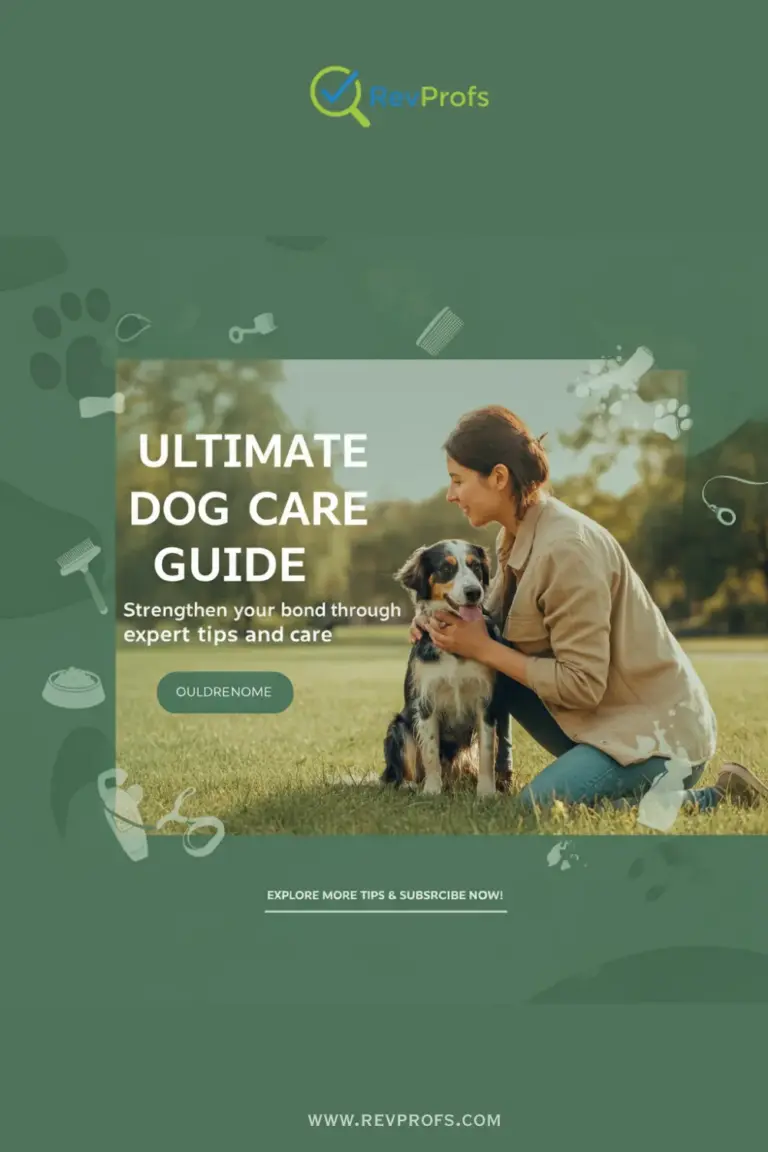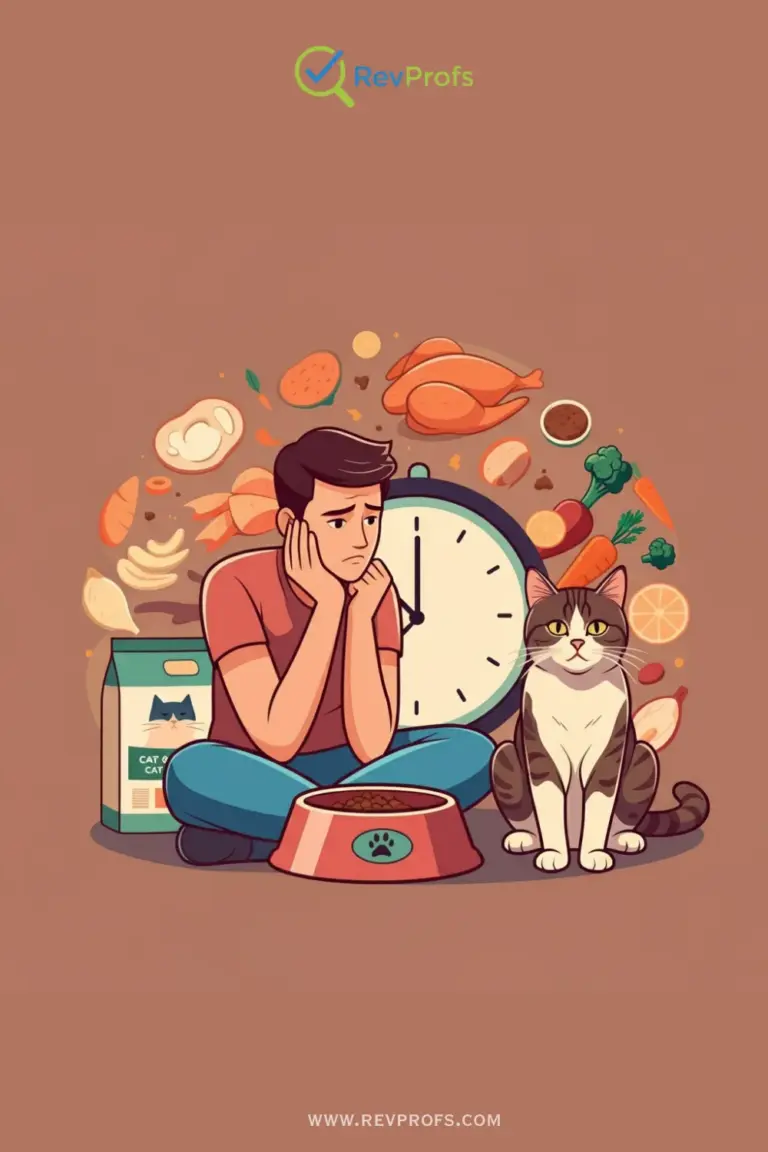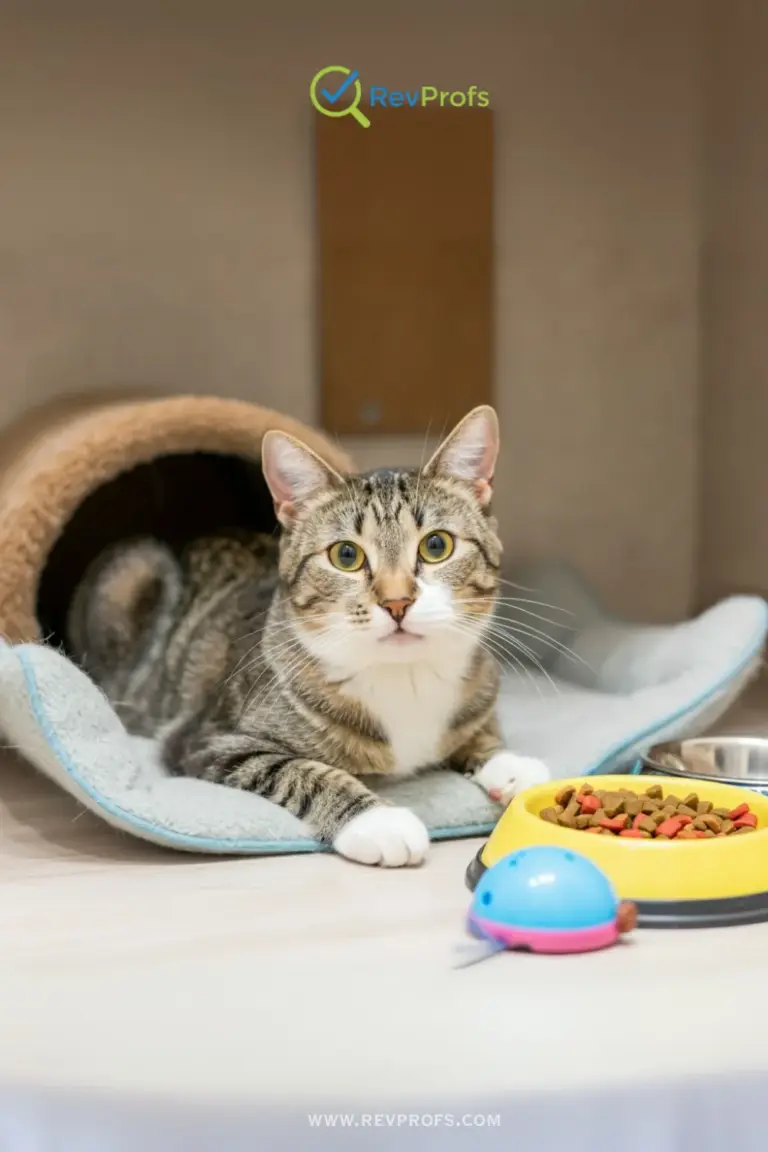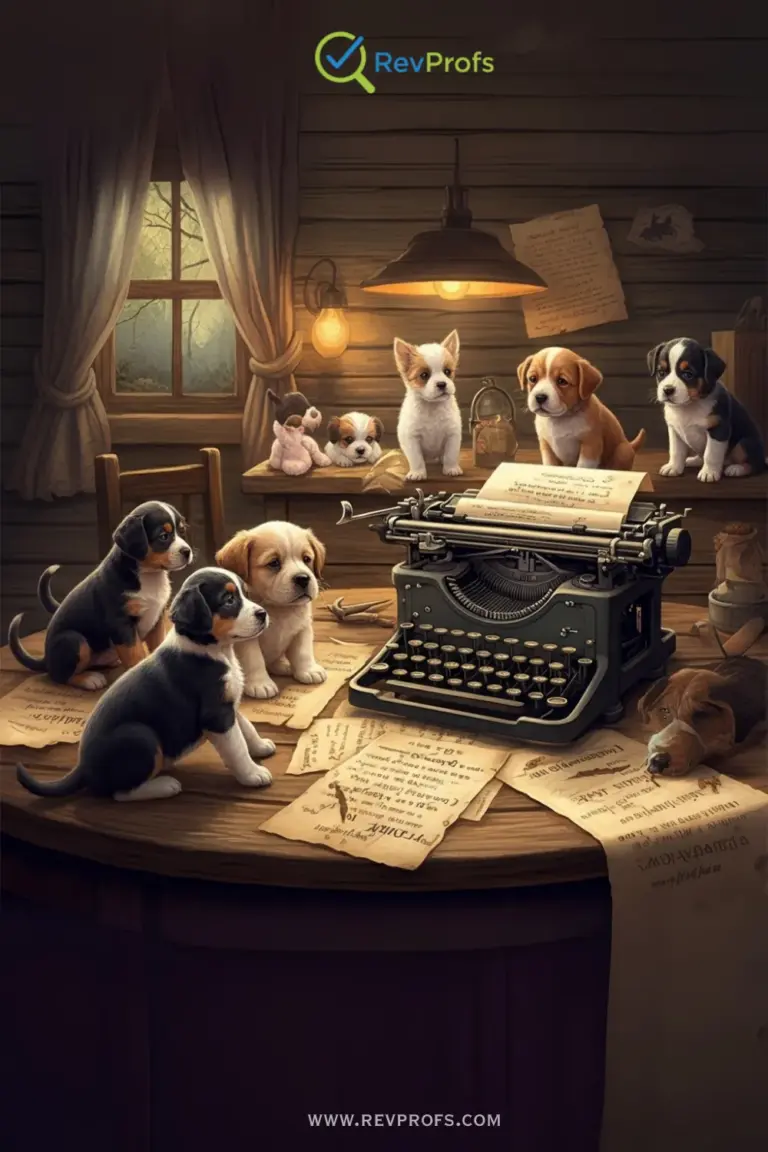Is Cat Food Bad for Dogs? 7 Health Risks to Know
It’s a scene many pet parents are familiar with: you turn your back for a moment, and your dog is enthusiastically munching on the cat’s dinner. While it might seem harmless, many owners find themselves asking, is cat food bad for dogs? The short answer is yes, it can be. While a single, sneaky bite is unlikely to cause a major issue for a healthy dog, making a habit of eating cat food can lead to significant health problems. Understanding the nutritional differences between their foods is key to keeping your canine companion safe and healthy.
Dogs and cats are both beloved members of our families, but their dietary needs are worlds apart. It’s like comparing the fuel needs of a small car to a high-performance race car—both need fuel, but the type and quality are vastly different. This guide will walk you through the potential health risks of a dog eating cat food, explain the core differences in their nutritional requirements, and give you practical tips to keep your pup’s nose out of the kitty’s bowl.
The Key Differences: Dog Nutrition vs Cat Nutrition
To understand why cat food isn’t suitable for dogs, we first need to look at what makes their dietary needs so distinct. The primary difference comes down to one simple biological fact: cats are obligate carnivores, while dogs are omnivores.
Cats as Obligate Carnivores:
This means cats must have meat in their diet to survive. Their bodies are specifically designed to derive essential nutrients directly from animal tissue. They have a limited ability to synthesize certain vital nutrients, like taurine and arachidonic acid, and must get them from their food.
Dogs as Omnivores:
Dogs, on the other hand, are omnivores. Like humans, they can get their nutrients from a combination of plant and animal sources. Their digestive systems are more flexible and can process a wider variety of ingredients. While they thrive on a diet rich in animal protein, they can also effectively digest and utilize nutrients from grains, fruits, and vegetables.
This fundamental difference is reflected in the formulation of their respective foods. Cat food is designed to meet the intense nutritional demands of a carnivore, while dog food is balanced for the more versatile digestive system of an omnivore.
Is Cat Food Bad for Dogs?
Yes, a diet of cat food is bad for dogs, especially over the long term. Cat food is formulated with much higher levels of protein and fat to meet the needs of a carnivore. While these nutrients are essential for cats, the excessive amounts can wreak havoc on a dog’s system. A dog’s diet requires a more balanced ratio of protein, fat, and carbohydrates. Regularly feeding your dog a diet that is too rich can lead to several cat food health risks, from mild digestive upset to severe and life-threatening conditions.
Let’s break down the specific dangers of a dog eating cat food regularly.
7 Major Health Risks of a Dog Eating Cat Food
If your dog consistently snacks on the cat’s kibble, it can lead to more than just an upset stomach. Here are seven health risks to be aware of.
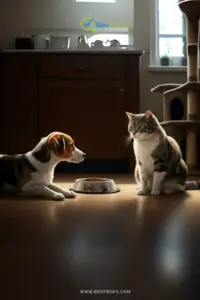
1. Digestive Issues and Stomach Upset
One of the most immediate consequences of a dog eating cat food is digestive upset. The high-fat and high-protein content can be too rich for a dog’s digestive system to handle. This can quickly lead to uncomfortable symptoms like:
- Diarrhea
- Vomiting
- Gas and bloating
- Stomach pain
For dogs with sensitive stomachs, even a small amount of cat food can trigger these dog digestive issues. While a single episode might resolve on its own, chronic exposure will likely lead to persistent gastrointestinal problems.
2. Pancreatitis in Dogs
This is one of the most serious risks. Pancreatitis is a painful and potentially fatal inflammation of the pancreas. A primary trigger for this condition is a high-fat diet. Because cat food is so rich in fat, it can overwhelm a dog’s pancreas, which is forced to work overtime to produce the enzymes needed for digestion.
Symptoms of pancreatitis in dogs include:
- Severe abdominal pain (often showing a “praying” posture)
- Repeated vomiting
- Loss of appetite
- Lethargy and weakness
- Fever
Pancreatitis requires immediate veterinary attention. It can become a chronic condition, making the dog more susceptible to future flare-ups, even with a proper diet.
3. Weight Gain and Obesity
The high calorie density of cat food is a fast track to weight gain for dogs. The rich fat and protein content packs a caloric punch that far exceeds what most dogs need. Just a few extra mouthfuls of cat food each day can quickly lead to unhealthy weight gain and, eventually, obesity.
Obesity in dogs is a serious health concern that puts them at a higher risk for:
- Diabetes
- Heart disease
- Joint problems, like arthritis
- Breathing difficulties
- A shorter lifespan
4. Nutritional Imbalances
Dog food is carefully formulated to provide a complete and balanced diet for an omnivore. It contains the right proportions of protein, fat, carbohydrates, vitamins, and minerals that a dog needs. Cat food, designed for a carnivore, has a completely different nutritional profile.
When a dog eats cat food instead of its own, it misses out on the balanced nutrition it requires. Over time, this can lead to deficiencies in certain nutrients and an excess of others, disrupting their overall health.
5. Kidney Strain
The high protein needs for dogs are different from those of cats. Cat food contains significantly more protein, and while dogs do need protein, an excessive amount can put a strain on their kidneys. The kidneys are responsible for filtering waste products from the blood, including the byproducts of protein metabolism. A chronically high-protein diet forces the kidneys to work harder, which can exacerbate pre-existing kidney conditions or contribute to kidney issues over time, especially in senior dogs.
6. Vitamin and Mineral Overload
Just as the macronutrients (protein, fat) are different, so are the micronutrients. For example, cat food is fortified with higher levels of certain vitamins, like Vitamin A and D, because cats have a higher requirement for them. For a dog, consuming these vitamins in such high concentrations can lead to toxicity over time. Vitamin A toxicity, for instance, can cause joint stiffness, dehydration, and general weakness.
7. Taurine in Cat Food Isn’t a Bonus for Dogs
You might hear about taurine in cat food and wonder if it’s good for your dog. Taurine is an amino acid that is essential for cats, who cannot produce it on their own. It’s vital for their heart health, vision, and reproductive function.
Dogs, however, can synthesize their own taurine from other amino acids in their diet. While some dog breeds are prone to conditions that may benefit from taurine supplementation (like dilated cardiomyopathy), they don’t need the high levels found in cat food. The presence of taurine in cat food doesn’t offer a special benefit that would justify the other risks involved. Your dog should get all its required nutrients, including the building blocks for taurine, from its own balanced food.
How to Stop Your Dog from Eating Cat Food
Keeping your dog away from the cat’s bowl can feel like a full-time job, but consistency is key. Here are some simple, effective strategies to manage your multi-pet household:
- Feed in Separate Rooms: The easiest solution is to feed your pets in different rooms with the doors closed. Give them a set amount of time to eat (15-20 minutes), and then pick up any leftover food.
- Elevate the Cat’s Food: Place the cat’s food bowl on a high surface that your dog can’t reach, like a cat tree, a sturdy shelf, or a countertop. Cats are natural climbers and will have no trouble accessing their meal.
- Use a Pet Gate with a Cat Door: Install a pet gate that has a small opening at the bottom. This allows your cat to pass through to their feeding area while keeping the larger dog out.
- Create a “Cat-Only” Feeding Station: Use a microchip pet feeder that only opens for the pet wearing the corresponding microchip tag. This is a high-tech but highly effective way to ensure only your cat can access their food.
- Maintain a Strict Feeding Schedule: Avoid “free-feeding” where food is left out all day. Scheduled meal times help you control who eats what and monitor your pets’ food intake more closely.
Remember to be patient and consistent. It may take some time for your pets to adjust to a new feeding routine, but your dog’s health is worth the effort.
What to Do If Your Dog Ate Cat Food
If you catch your dog in the act, don’t panic. A small amount on a single occasion is unlikely to cause serious harm to a healthy adult dog.
- For a small snack: Simply monitor your dog for any signs of digestive upset like vomiting or diarrhea. If they seem fine after 24 hours, you likely have nothing to worry about.
- If a large amount was eaten: If your dog has eaten a significant quantity of cat food, or if they are a small breed, a senior, or have a pre-existing health condition (like a sensitive stomach or kidney disease), it’s a good idea to call your vet for advice. They may recommend monitoring them at home or bringing them in for an examination.
- If you see signs of pancreatitis: If your dog shows any symptoms of pancreatitis, such as repeated vomiting, a painful belly, or extreme lethargy, contact your veterinarian or an emergency animal hospital immediately.
Ultimately, preventing access is the best course of action. Keeping your pets’ food separate ensures both your dog and cat get the precise, balanced nutrition they need to live long, happy, and healthy lives.
Frequently Asked Questions (FAQs)
1. What should I do if my pet accidentally eats food meant for another species?
If your dog or cat consumes food not meant for them, monitor them closely for any unusual symptoms such as vomiting, diarrhea, or changes in energy levels. Contact your veterinarian immediately for guidance if you notice anything concerning.
2. Is it safe for cats to eat dog food or vice versa?
While a small amount of dog food won’t typically harm a cat (and vice versa), it’s not recommended as the nutritional formulations are different. Cats require taurine and other nutrients that dog food doesn’t provide, while dogs eating cat food might gain excessive weight or face digestion issues due to the higher fat content.
3. Can feeding my dog or cat the wrong food impact their health long-term?
Yes, consistently feeding your pet the wrong type of food can lead to nutrient deficiencies or imbalances over time. Dogs and cats have specific dietary needs to support their overall health, and a lack of the right nutrients can result in serious health conditions.
4. How do I keep my pets from eating each other’s food?
To prevent food sharing, try feeding your pets in separate rooms or at different times. Elevated feeding stations or food puzzle feeders can also help ensure each pet sticks to their own meal and doesn’t accidentally consume the other’s food.
5. What signs should I watch for after my pet eats the wrong food?
Keep an eye out for symptoms like vomiting, diarrhea, bloating, loss of appetite, or unusual lethargy. These could signal digestive upset or more serious issues, especially if the food contains harmful ingredients. When in doubt, consult your veterinarian as soon as possible.
Ready for the Next Step?
Your pet's journey doesn't end here. Explore our expert guides to ensure they get the best care at every stage.
Puppy & Dog Care
From choosing the right food to understanding their behavior, our dog care guides cover everything you need to know.
Explore Dog GuidesGear & Product Reviews
Find honest, in-depth reviews on the latest pet gear, from smart collars to durable toys, and make informed decisions.
See All Reviews

